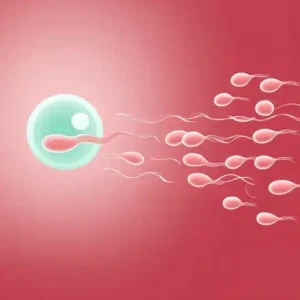So, your hours are now passing like days because you have entered the “two-week wait”. If you are like many other women who are trying to conceive, you don’t want to wait one second longer than you have to before you see if you get a big fat positive (BFP). So, when is the best time to take a pregnancy test?
The great thing is that unlike many generations of women before, today’s women don’t have to wait for their missed period before they can take a home pregnancy test. However, knowing the exact time to take the test to ensure accurate results may not be as easy as it may seem.
The Scoop on Home Pregnancy Tests
To best determine when to take a home pregnancy test, you first need to understand how they work. Pregnancy tests for at-home use work by monitoring the urine for a hormone referred to as hCG, or Human Chorionic Gonadotropin. This hormone is secreted by the embryo after it has implanted itself onto the uterus’ wall, which usually occurs between 6 and 8 days following conception (or 7 to 10 days after ovulation).
How soon after conception a test can detect your pregnancy will depend on the test’s sensitivity to hCG. This hormone is annotated by mIU and measured using thousandths of International Units. The hCG levels found in a woman’s urine begin very low, but increase rather quickly as the embryo begins to grow. In terms of a pregnancy test, the more sensitive a test is to this hormone, the quicker it can accurately predict a pregnancy.
How hCG levels rise
Here is a good idea of how hCG levels begin: A woman who is newly pregnant will have about 25 mIU of hCG once she reaches her 10th day post ovulation, by 12 days it has risen to 50 mIU and by 14 days past ovulation the level is up at 100 mIU.
The best high street pregnancy tests that claim “early” results are calibrated using a system to detect hCG at levels of 20 mIU/ml. Tests such as these will provide accurate results as soon as seven to 10 days post ovulation; this is long before a missed period. Clearblue and First Response both offer highly reliable early pregnancy tests. These tests are extremely accurate when used correctly.
HCG levels will continue to rise rapidly during the first few weeks of pregnancy, and will peak at around 8-11 weeks before gradually decreasing. However, it’s important to note that hCG levels can vary greatly between women and pregnancies, and a single hCG measurement is not always a reliable indicator of pregnancy health. In cases of suspected ectopic pregnancy or miscarriage, doctors may monitor hCG levels over time to check for changes.
The Best Early Pregnancy Test
There is a lot of debate right now on the best early pregnancy test. With so many to choose from, it can be hard to decide which test is best. Some research does seem to suggest that the best early pregnancy test on the market currently is the First Response Early Results Pregnancy Test. Zoom Baby customer feedback is also positive of this particular brand of test.
When your time comes to buy pregnancy tests, you will find that they come in two formats: midstreams and test strips. The difference between the two simply comes down to personal preference – some women prefer the midstream tests so they don’t have to collect their urine in a cup. Yet, keep in mind such tests are generally more expensive.
It is important to note that no matter which test you choose, it is recommended to wait until after your missed period to take the test for the most accurate result. Additionally, it is important to carefully follow the instructions on the packaging to ensure accurate results and to consult with a healthcare professional for any questions or concerns about pregnancy.
The Best Time of Day To Take A Pregnancy Test
To a certain extent, the point during the day when you take a pregnancy test does matter. The chances of getting an accurate result are increased if you test using the first urine of the morning. This is particularly true if your period is a day or two late.
Home pregnancy tests work by detecting the hormone human chorionic gonadotropin (hCG) in your urine. This will build up during the night and will lead to you first wee being a bit more concentrated with when you go to the loo when you wake up. This is assuming you don’t pee during the might or drinks loads of water whilst in bed!
Of course, you can still take a pregnancy test any time, including in the middle of the night or on your lunch break! Just be aware that you are more likely to get a false negative if testing at any of these times. This is especially true if your have diluted urine because you have been drinking too much water. Or, if your period is not late.
It is important to also follow the instructions on the pregnancy test carefully, including the recommended time frame for reading the results. Waiting too long or reading the results too soon can also lead to inaccurate results. It is also a good idea to confirm with a healthcare provider if you receive a positive result, as they can provide further testing and guidance on next steps.
What are the Early Signs of Pregnancy?
One thing to consider before taking a home pregnancy test is what physical signs and symptoms have you been displaying since the assumed conception date. The following is a list of early pregnancy signs:
- Swollen and/or tender breasts
- Tiredness and Fatigue
- Food aversions or cravings
- Some women may experience implantation bleeding, cramping and/or spotting as the embryo is being implanted into the uterus’ wall.
- If you notice one or more of these symptoms between 7 and 10 days after ovulation, then you may want to go ahead and take a pregnancy test as soon as possible, rather than waiting.
It is important to keep in mind that while home pregnancy tests are generally reliable and accurate, they are not foolproof. False positives and false negatives can occur for a variety of reasons. For example, a false positive may occur if you are taking certain medications or have recently had an ectopic pregnancy or miscarriage. On the other hand, a false negative may occur if you test too early or too late in your cycle, or if you have an ectopic pregnancy.
If you receive a negative result but still suspect you may be pregnant, it is recommended that you wait a few days and retest. If you continue to get negative results but still have symptoms of pregnancy, it may be time to schedule an appointment with your healthcare provider.
In summary, the best time to take a pregnancy test depends on a variety of factors, including the sensitivity of the test, your individual hCG levels, and your menstrual cycle. If you are experiencing signs and symptoms of pregnancy, it may be worth testing earlier than you normally would. But ultimately, the most accurate way to confirm a pregnancy is by visiting your healthcare provider for a blood test or ultrasound.
Photo Credit: “Test Results” (CC BY 2.0) by Editor B
This post first appeared in 2018. It was last updated in June 2023.
Zoom Baby is a leading supplier of Pregnancy Tests and Ovulation Test Kits





